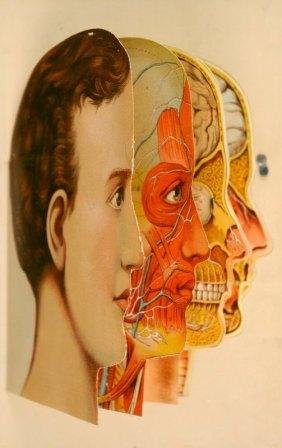 Hi! I’m Rachel Ingold, Curator for the History of Medicine Collections. This summer, the History of Medicine Collections will be moving from the Medical Center Library on Duke’s medical campus to the RBMSCL on West Campus. For the next five weeks, join me every Monday here at The Devil’s Tale. I’ll be walking you through the move step-by-step.
Hi! I’m Rachel Ingold, Curator for the History of Medicine Collections. This summer, the History of Medicine Collections will be moving from the Medical Center Library on Duke’s medical campus to the RBMSCL on West Campus. For the next five weeks, join me every Monday here at The Devil’s Tale. I’ll be walking you through the move step-by-step.
This week, a little background: The History of Medicine Collections consists of over 20,000 rare and unique medical books and journals. Along with these print items are 4,500 manuscripts and numerous medically-related instruments, artifacts, prints, photographs, and ephemera. The collection is particularly strong in the areas of anesthesia, human sexuality, materia medica, pediatrics, psychiatry, vivisection, and yellow fever.
Two major gifts helped form the HOM Collections. In 1931, the Georgia Medical Society of Savannah donated its library of 8,000 volumes to Duke University. Another major donation which brought a new level and depth to the collection was the 1956 donation of the Trent Collection by Mrs. Mary Duke Biddle Trent Semans.
 So, how does one go about moving a collection with so many rare print items and manuscripts, as well as a variety of instruments and artifacts including curiosities such as amputating saws, ivory anatomical manikins, and glass eyeballs? The answer: very carefully. And with a team of wonderful people.
So, how does one go about moving a collection with so many rare print items and manuscripts, as well as a variety of instruments and artifacts including curiosities such as amputating saws, ivory anatomical manikins, and glass eyeballs? The answer: very carefully. And with a team of wonderful people.
I’m grateful to be working with a great group of folks from the Medical Center Library & Archives and Perkins Library. So many people have been involved in making this move happen. And I hope this series of blog posts will highlight some of the work they have done to help and how we are going about this move.
For photos of the move from start to finish, visit the “HOM Collections Move” set on the Duke University Libraries’ Flickr photostream.
Next week: Technical Services gets to work!
Post contributed by Rachel Ingold, Curator for the History of Medicine Collections.


